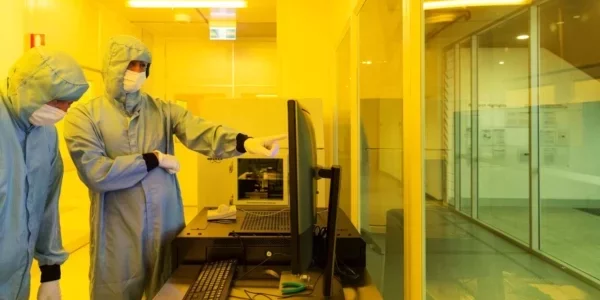jtardif999
Regular
Have been thinking about the whole Vorago Akida radiation-hardening abandonment thing and you know I think it makes sense that this may be the case when you consider the company’s change of policy to just be an IP producing company. NASA perhaps intend to use a chip architecture containing Akida IP in the final analysis and that chip architecture will be the one that gets radiation hardened. That would then put this whole thing into perspective - why would the company be saying we are no longer a chip company if we intended to sell radiation hardened Akida chips? Just my thoughts..With Akida successful with phase 1 and helping the rover to achieve 20kph ( 40kph downhill). We might want to revisit this document..
NASA SBIR 2022 Phase I Solicitation
H6.22 Deep Neural Net and Neuromorphic Processors for In-Space Autonomy and Cognition
Lead Center: GRC
Participating Center(s): ARC
Scope Title
Neuromorphic Capabilities
Scope Description
This subtopic specifically focuses on advances in signal and data processing. Neuromorphic processing will enable
NASA to meet growing demands for applying artificial intelligence and machine learning algorithms onboard a
spacecraft to optimize and automate operations. This includes enabling cognitive systems to improve mission
communication and data-processing capabilities, enhance computing performance, and reduce memory
requirements. Neuromorphic processors can enable a spacecraft to sense, adapt, act, and learn from its
experiences and from the unknown environment without necessitating involvement from a mission operations team.
Additionally, this processing architecture shows promise for addressing the power requirements that traditional
computing architectures now struggle to meet in space applications.
The goal of this program is to develop neuromorphic processing software, hardware, algorithms, architectures,
simulators, and techniques as enabling capability for autonomous space operations. Emerging memristor and other
radiation-tolerant devices, which show potential for addressing the need for energy-efficient neuromorphic
processors and improved signal processing capability, are of particular interest due to their resistance to the effects
of radiation.
Additional areas of interest for research and/or technology development include: (a) spiking algorithms that learn
from the environment and improve operations, (b) neuromorphic processing approaches to enhance data
processing, computing performance, and memory conservation, and (c) new brain-inspired chips and
breakthroughs in machine understanding/intelligence. Novel memristor approaches that show promise for space
applications are also sought.
This subtopic seeks innovations focusing on low-size, -weight, and -power (SWaP) applications suitable to lunar
orbital or surface operations, thus enabling efficient onboard processing at lunar distances. Focusing on SWaPconstrained
platforms opens up the potential for applying neuromorphic processors in spacecraft or robotic control
situations traditionally reserved for power-hungry general-purpose processors. This technology will allow for
increased speed, energy efficiency, and higher performance for computing in unknown and uncharacterized space
environments including the Moon and Mars. Proposed innovations should justify their SWaP advantages and target
metrics over the comparable relevant state of the art (SOA).
Expected TRL or TRL Range at completion of the Project
4 to 6
Primary Technology Taxonomy
Level 1
TX 10 Autonomous Systems
Level 2
TX 10.1 Situational and Self Awareness
Desired Deliverables of Phase I and Phase II
Prototype
Hardware
Software
Desired Deliverables Description
Phase I will emphasize research aspects for technical feasibility and show a path toward a Phase II proposal.
Phase I deliverables include concept of operations of the research topic, simulations, and preliminary results. Early
development and delivery of prototype hardware/software is encouraged.
Phase II will emphasize hardware and/or software development with delivery of specific hardware and/or software
products for NASA, targeting demonstration operations on a low-SWaP platform. Phase II deliverables include a
working prototype of the proposed product and/or software, along with documentation and tools necessary for
NASA to use the product and/or modify and use the software. In order to enable mission deployment, proposed
prototypes should include a path, preferably demonstrated, for fault and mission tolerances. Phase II deliverables
should include hardware/software necessary to show how the advances made in the development can be applied
to a CubeSat, SmallSat, and rover flight demonstration.
State of the Art and Critical Gaps
The current SOA for in-space processing is the High Performance Spaceflight Computing (HPSC) processor being
developed by Boeing for NASA Goddard Space Flight Center (GSFC). The HPSC, called the Chiplet, contains 8
general purpose processing cores in a dual quad-core configuration. Delivery is expected by December 2022. In a
submission to the Space Technology Mission Directorate (STMD) Game Changing Development (GCD) program,
the highest computational capability required by a typical space mission is 35 to 70 GFLOPS (billion fast logical
operations per second).
The current SOA does not address the capabilities required for artificial intelligence and machine learning
applications in the space environment. These applications require significant amounts of multiply and accumulate
operations, in addition to a substantial amount of memory to store data and retain intermediate states in a neural
network computation. Terrestrially, these operations require general-purpose graphics processing units (GPGPUs),
which are capable of teraflops (TFLOPS) each—approximately 3 orders of magnitude above the anticipated
capabilities of the HPSC.
a
Neuromorphic processing offers the potential to bridge this gap through a novel hardware approach. Existing
research in the area shows neuromorphic processors to be up to 1,000 times more energy efficient than GP-GPUs
in artificial intelligence applications. Obviously, the true performance depends on the application, but nevertheless
the architecture has demonstrated characteristics that make it well-adapted to the space environment.
Relevance / Science Traceability
The Cognitive Communications Project, through the Human Exploration and Operations Mission Directorate
(HEOMD) Space Communications and Navigation (SCaN) Program, is one potential customer of work from this
subtopic area. Neuromorphic processors are a key enabler to the cognitive radio and system architecture
envisioned by this project. As communications become more complex, cognition and automation will play a larger
role to mitigate complexity and reduce operations costs. Machine learning will choose radio configurations and
adjust for impairments and failures. Neuromorphic processors will address the power requirements that traditional
computing architectures now struggle to meet and are of relevance to lunar return and Mars for autonomous
operations, as well as of interest to HEOMD and Science Mission Directorate (SMD) for in situ avionics capabilities.
References
Several reference papers that have been published at the Cognitive Communications for Aerospace Applications
(CCAA) workshop are available at: http://ieee-ccaa.com
Page




